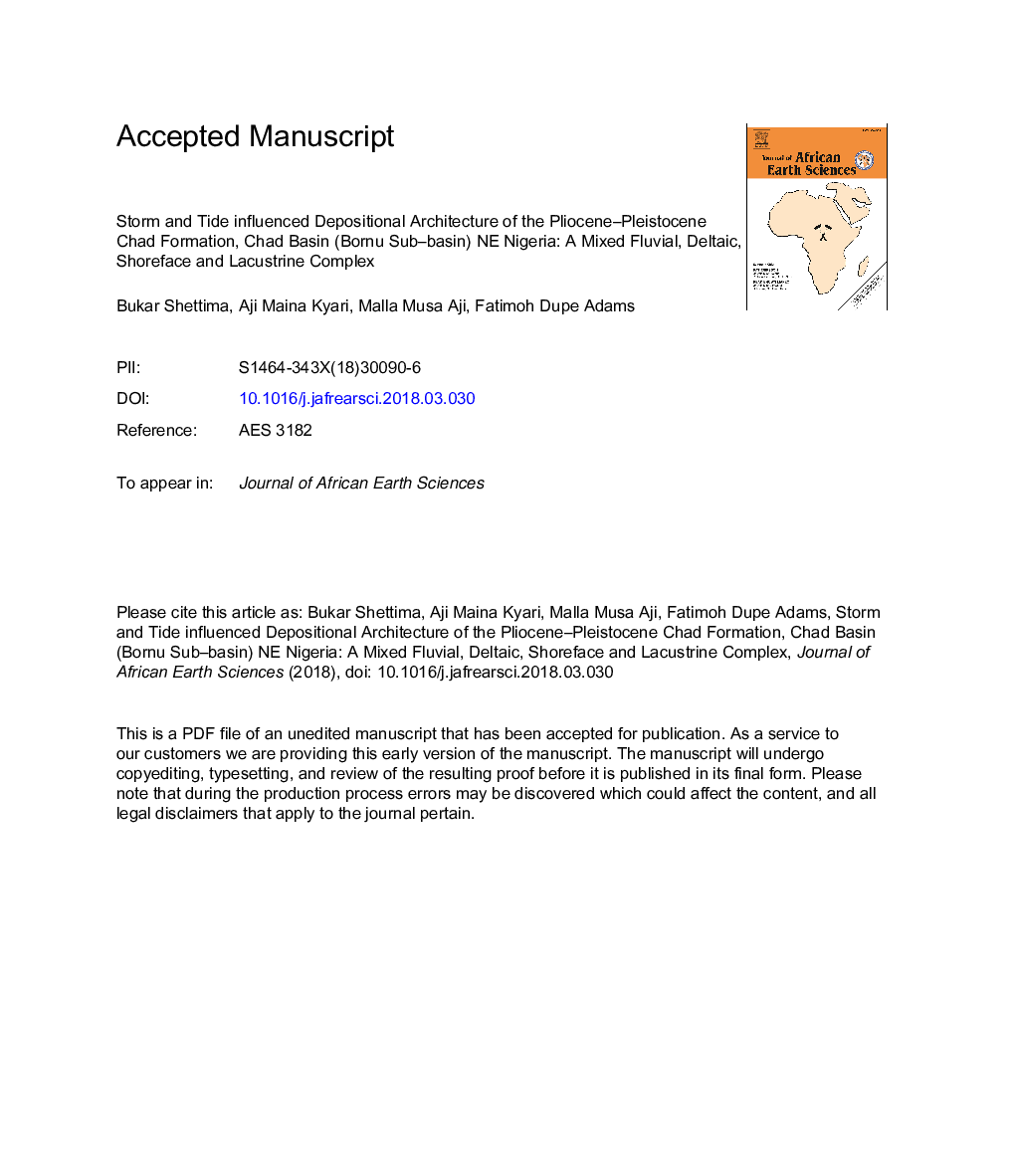| Article ID | Journal | Published Year | Pages | File Type |
|---|---|---|---|---|
| 8913482 | Journal of African Earth Sciences | 2018 | 34 Pages |
Abstract
Lithofacies analyses of the upper part of the Chad Formation (Bama Ridge Complex) in the Bornu Sub-basin of the Chad Basin indicated four facies associations; fluvial, deltaic, shoreface and lacustrine sequences. The fluvial sequences are composed of fining upward cycles with successive occurrence of planar crossbedded sandstone facies displaying unimodal paleocurrent system and rare mudstone facies typical of braided river system. The deltaic succession consists of both fining and coarsening upwards cycles with the former depicting fluvial setting of an upper delta plain while the later suggestive of mouth-bar sequences. The setting displays a polymodal current system of fluvial, waves, storms and tides that were primarily induced by complex interactions of seiches and lunar tides. Similar current systems devoid of fluvial patterns were reflected in the coarsening upward packages of the shoreface sequences. Lacustrine succession composed of thick bioturbated mudstone facies generally defines the base of these coarsening upward profiles, giving a fluvio-lacustrine geomorphic relief where complex interaction developed the deltaic and shoreface facies along its shorelines. Clay mineral fractions of the formation are dominantly kaolinitic, indicating a predominantly humid tropical-subtropical climatic condition during their deposition. This climatic regime falls within the African humid period of the early-mid Holocene that led to the third lacustrine transgression of the Lake Mega-Chad, whereas the subordinate smectite mineralization points to aridification that characterizes most of the post humid period to recent.
Related Topics
Physical Sciences and Engineering
Earth and Planetary Sciences
Geology
Authors
Bukar Shettima, Aji Maina Kyari, Mallam Musa Aji, Fatimoh Dupe Adams,
